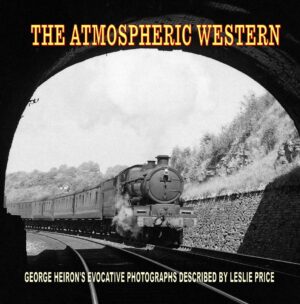

‘Cornwall’ Transition from Steam. RC Riley Archive Vol 6
£14.50
Jeremy Clements
- Description
- Additional information
- Reviews (0)
Description
Cornwall, individualistic in its landscapes and people, was one of Dick Riley’s favourite photographic locations. From the mid-1950s until the early 1960s, several times he made the long journey by road from south London to record operations in this most remote corner of the Great Western’s English network. In so doing he captured steam’s closing years and the arrival of the first diesel-hydraulics, in themselves a further manifestation of BR Western’s determination to retain a spirit of independence.
This album surveys familiar types of locomotive and rolling stock yet highlights how their composition and operations were uniquely fashioned to meet the particular challenges presented by the Royal Duchy.
In the years of Dick Riley’s visits, Cornwall remained remote through geography and by virtue of the River Tamar. This would change with completion of the long-awaited road crossing, which coincided with the end of steam in the west.
His collection surveys an earlier time when the railway served the community in an intensely localised sense. For the indigenous population it was an important conduit of communication, trade and personal movement. The images impart an impression of a world where railway personnel knew well not only their colleagues but also a sizeable proportion of the local population they served.
The steam population was also of localised character. It was familiarly Great Western but subtly different in its composition. Fewer classes were used and many individual locomotives were long-term residents. It seems probable that some rarely ventured as far east as Newton Abbot, and then only for attention in the old South Devon Railway’s works. The profile of shed allocations imparts a sense of simplicity and of focus on locomotives best suited to the work in hand. Hopefully, the views that follow capture the flavour of an interesting and individualistic corner of the (Great) Western Region’s empire.
Following the appearance of Western Region Non-Passenger Trains (Transport Treasury Publishing, 2020), a reader challenged how it was possible to be so definitive about train composition with long rakes of vehicles disappearing into the distance.
As the collection has been scanned, the compiler enjoys an advantage in being able to magnify images. Coupled with their excellence this process yields a mass of detail not otherwise visible, enabling an attempt at an expanded picture in words.
Filling the gaps is detective work that relies on the reference library, as detailed in the Bibliography. Atlases, route maps and station diagrams are invaluable in confirming locations and direction of travel.
Rolling stock often is the most time consuming but distinctive body profiles, counting doors and measuring window spacings all help to isolate a vehicle’s vintage and type. Many GWR passenger trains were a glorious mixture but there were consistencies as with catering vehicles in the centre of a set, and often older than their companions. Informative publications on diagram numbers, train reporting numbers for main line passenger services and goods trains’ headlamp codes all help to dissect and re-assemble the jigsaw.
Despite all this published information and regardless of how thorough is the desk research, local knowledge can overrule these endeavours. For example, a photograph of a breakdown train in Western Region Non-Passenger Trains was reported as at Langford Bridge on the Westbury-Salisbury line, following exhaustive research. However, Nicolas Trudgian marshalled his comprehensive local knowledge to advise that the location was actually on the lower stretches of Dainton East.
DIGITAL VERSION
Additional information
| Weight | 540 g |
|---|---|
| Dimensions | 273 × 215 cm |
| pages | 112 |
| illustrations | 152 |
| cover | paperback |
| isbn | 9.78191E+12 |
| dimensions | 273 x 215 mm |
| format | portrait |
Only logged in customers who have purchased this product may leave a review.











Reviews
There are no reviews yet.